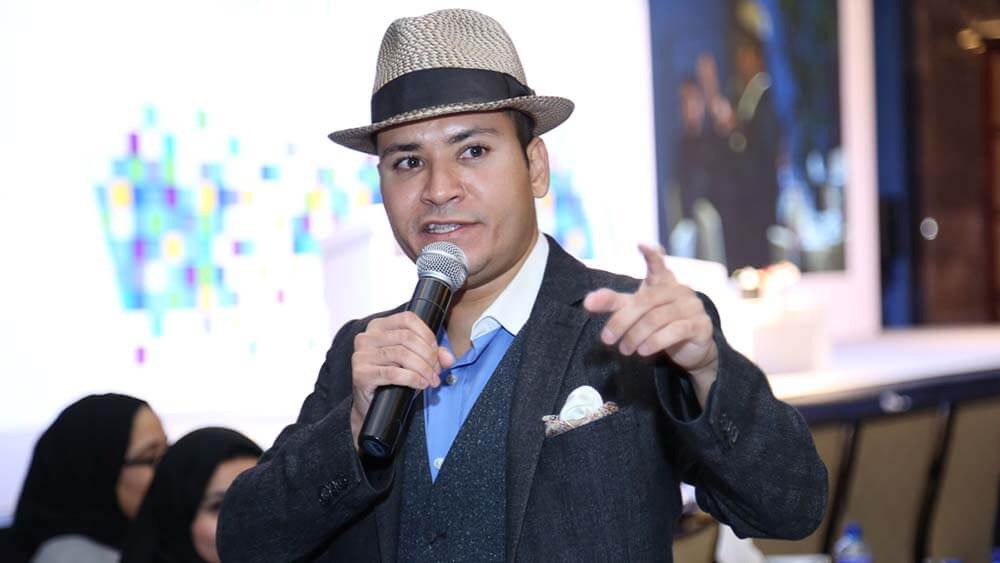
“International Man of Memory” Chester Santos offers four steps to follow to help you remember the names of people you meet at an event. (Courtesy Chester Santos)
Chester Santos was flipping through television channels one night when he saw a story about the annual USA Memory Championship, a competitive event for U.S. citizens over the age of 10 that organizers bill as “an Olympiad for mental athletes.” It sparked his interest, Santos told Convene, because people had often commented on his good memory. Santos quickly learned, however, that “although I was probably above average in terms of memory to begin with, I wasn’t on the level of the top people in the country, who memorize hundreds of names or hundreds of digits perfectly in minutes,” he said.
Santos set out to find out if, through study, he could improve his memory. The answer was yes, and in 2008, Santos won the memory championship. Since then, Santos has traveled to 30 countries as an organizational trainer and conference speaker, sharing the memory-enhancing techniques he discovered. And as the world accelerates the move back to more in-person events, Santos, who calls himself the “International Man of Memory,” offered tips tailored to those who have gotten rusty at putting names to faces.
Santos first shared three basic components of memory, in the context of remembering people’s names:
- Visuals are very, very powerful. “We tend to be good at remembering things that we see,” said Santos. After we meet someone, we can often remember their face, but not their name, “because their appearance was recorded into our visual memory — a name is something much more abstract to the brain.” Santos advises that when you meet someone, try to come up with an image linked to a person’s name, to help create a visual memory of their name. For example, “if you meet someone named Mike, think of a microphone, or think of a white rabbit to remind yourself of the name ‘Alice.’”
- Involving more senses aids memory. Engaging more of your senses when you learn something activates more areas of your brain, which builds more connections in your mind and makes it easier to retrieve information, Santos said. In the example of the name “Alice,” in addition to visualizing a white rabbit, “imagine that you’re petting a white rabbit, or you can smell it,” he said.
- To remember an image, make it weird. As you imagine images and smells and sounds, “try to make all of that in some way crazily unusual and out of the ordinary,” Santos said, because there is a psychological aspect to human memory. “We tend to remember things that are extraordinary and that catch us by surprise with little or no effort.”
Keeping those principles in mind, Santos recommended four steps to follow when you are meeting people at an event:
- Repeat a person’s name and shake their hand — or elbow bump — when you meet them. “The point is to slow down long enough to pay attention to a person’s name for at least a second or two,” he said. “Start there, and the habit become second nature.”
- Early on in an interaction, ask the person a simple question using their name, Santos said. “That’s it, just one question early on — don’t use the name over and over again to where it might seem a little bit weird,” he said. But intentionally using the name of a person you just met helps reinforce it and prevents it from just going in one ear and out the other, he said.
- Take a few seconds to think of connection between the person’s name and something that you already know — “it could be a famous person, a character from a TV show or movie, or a friend or family member with the same name,” he said. “But just thinking of a connection between the name and literally anything at all you already know is going to help the name stay in your mind longer and help get it into long-term memory.”
- Finally, when you leave a conference or event, make it a point to try to say goodbye to people using their names. “That’s really going to go a long way,” Santos said, “toward helping you remember more of those names in the long term.”
Take it from someone who regularly wows audiences by being able to recall hundreds of names of audience members that he’s only met once: If you practice combining the last four steps with the first three visual components of memory, Santos said, “you actually cannot help but get better at remembering names.”
Barbara Palmer is deputy editor at Convene.
